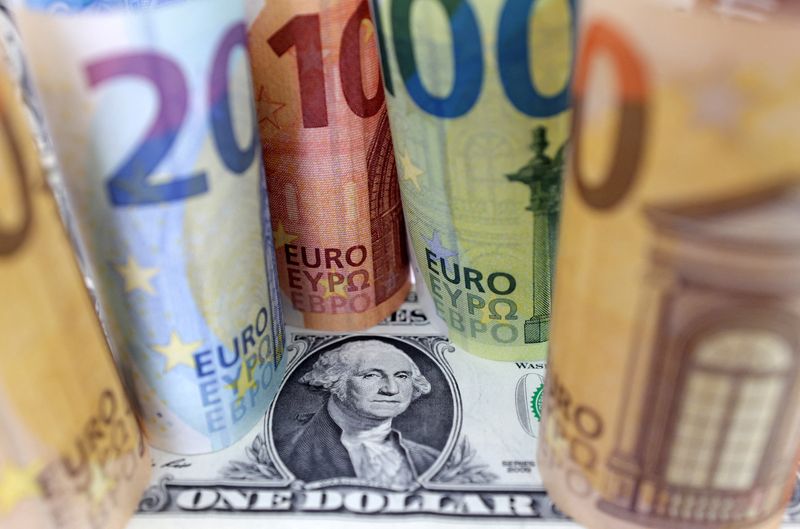By Kevin Buckland
TOKYO (Reuters) -The yen slipped to a 10-week low on Friday, while the dollar ground towards a fourth weekly advance as traders dialled back bets on how quickly the Bank of Japan will raise interest rates and how soon the Federal Reserve will cut them.
The yen was little changed at 149.395 per dollar after dipping to 149.495 earlier for the first time since Nov. 27. It slumped 0.76% in the previous session, and is set for a 0.68% slide this week.
BOJ Governor Kazuo Ueda said on Friday there was a high chance for easy monetary conditions to persist even after the central bank ends negative interest rate policy, which the market expects to happen as early as next month.
That echoed dovish comments from his deputy, Shinichi Uchida, a day earlier that “it’s hard to imagine” that rates would rise “rapidly.”
“Yen’s overreaction is a warning sign that market may still be expecting a steeper tightening from the BOJ and may be disappointed later,” Saxobank’s head of FX strategy Charu Chanana wrote in a report.
“Our technical strategist says that the break of 148.80 resistance in could open the doors to 152, but intervention risks are likely to come in the way above 150.”
On Friday morning in Tokyo, Japanese Finance Minister Shunichi Suzuki said that he was “watching FX moves carefully,” uttering the well-worn phrase for the first time since Jan. 19. Traders were unfazed by the warning.
The – which measures the currency against six major peers – ticked up slightly to 104.19, having gained 0.1% on Thursday after data pointed to the resilience of the U.S. labor market, dealing another blow to bets for early Fed rate cuts.
For the week, the dollar index has climbed 0.2%, getting off to a strong start after blowout monthly payrolls data last Friday and a hawkish tilt from Fed Chair Jerome Powell in a “60 Minutes” interview aired Sunday.
The next major scheduled U.S. data release is January’s Consumer Price Index (CPI) inflation reading on Tuesday.
Traders currently lay just 16.5% odds for a rate cut at the Fed’s next policy meeting in March, versus 65.9% odds a month ago, according to CME Group’s (NASDAQ:) FedWatch Tool.
“While pricing for the March FOMC has been trimmed to negligible levels, there’s still latent upside fuel for the USD in pricing for FOMC meetings beyond that,” Richard Franulovich, Westpac’s head of foreign exchange strategy, wrote in a client note, predicting a rally toward 105.50 for the dollar index.
“We assume U.S resilience can extend well into 2024 … and will make for a bumpy disinflation last mile.”
The euro was little changed at $1.07715 and sterling was about flat at $1.26135. Both currencies have been relatively resilient with officials from the European Central Bank and Bank of England pushing back against market wagers on early rate reductions.
New Zealand’s dollar gained 0.39% to $0.61205, supported by bets for a delayed start to Reserve Bank of New Zealand rate cuts – or even the potential for further hikes – after data this week showed a stronger-than-forecast jobs market.
ANZ now expects quarter-point hikes both this month and in April as their main scenario, although February is a “line-ball call,” chief economist Sharon Zollner wrote in a note.
“If they don’t hike in February, we think they will in April, unless we start to see meaningful downside surprises,” she said.
“We just don’t think the RBNZ Committee will feel confident that they’ve done enough to meet their inflation mandate. The buck stops there.”

The dollar was flat at $0.6491.
Leading cryptocurrency bitcoin rose 1.5% to around $46,000, on course for an 8% weekly advance, which would be its best performance in two months.


